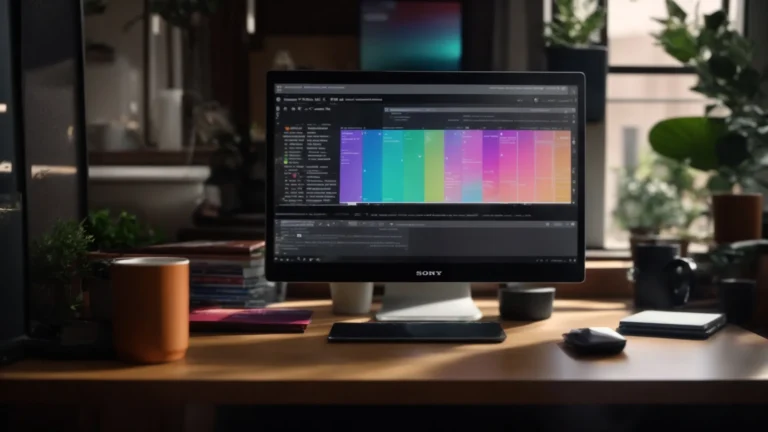Heads Up: When you purchase through links on our site, we may earn an affiliate commission at no cost to you.
Your site should move visitors from curiosity to a clear next step. That means simple paths that help buyers find listings fast and help sellers request a valuation without friction. With a few smart tweaks—clean navigation, stronger CTAs, and faster replies—you turn more clicks into real conversations.
If building these paths feels messy, don’t worry. Below you’ll see how to map the journey, cut extra steps, and use light tech to support follow-ups—the result: more qualified leads and less time spent chasing them.
Key Takeaways
- Clear buyer and seller paths improve real estate interactions.
- Intuitive features guide visitors to informed real estate decisions.
- Virtual tours and visual content boost client confidence in listings.
- Efficient communication channels build trust with potential prospects.
- Data insights help optimize marketing efforts for more leads.
Understanding the Importance of Buyer and Seller Paths on Your Realtor Site

Buyer and seller paths are your blueprint for guiding visitors. They show where people start, what they need next, and how they contact you. With clear paths, you reduce confusion, boost trust, and keep momentum going from the first visit to the appointment.
You’ll also get better data. When every step is defined, you can see which pages pull their weight, where users stall, and what to improve next. Small refinements here drive steady gains across your marketing.
Defining Buyer and Seller Paths
A buyer path walks a visitor from the homepage to a filtered search, a property page, a saved search or tour request, then a quick form and confirmation. A seller path moves a homeowner from your homepage to “What’s My Home Worth?,” captures an address and contact, explains your valuation process, and schedules a consult. Each stage should ask for one small action and point to one clear next step.
Map these paths on paper first. Label each touchpoint, the question a user has at that moment, and the single action you want them to take. Then match the right tool: filters for buyers, an address lookup, a short form for sellers, and an automatic follow-up that arrives within minutes.
Analyzing User Journeys for Real Estate Transactions
Watch what people click, not what you assume. Track filter usage, time on listing pages, form starts, and completions. If users bounce on the search page, simplify filters. If tour requests lag, move the CTA higher and repeat it after the photo gallery.
Tie site behavior to outcomes. Which pages lead to booked tours? Which valuation pages lead to consults? Use that info to trim dead ends and surface the pages that convert. Review these numbers weekly so improvements compound.
The Role of Effective Pathways in Client Satisfaction
Clear paths make visitors feel guided, not sold. Buyers should always know how to view, save, and see a home. Sellers should always know how to price a property and how to schedule a call. Fewer steps and faster replies build trust.
Strong paths also help your team. With consistent flows and predictable follow-ups, you spend less time digging through emails and more time speaking with qualified leads. That speed and clarity show up in reviews, referrals, and repeat business.
- Instant feedback
- Valuable insights
- Actionable tips
Essential Components of a Buyer Path on Your Realtor Site

Your buyer path should feel obvious from the first click. Keep the search fast, the pages light, and the next step crystal clear. The goal: help a visitor find a property, ask a question, and book a tour with as few hurdles as possible.
Creating Engaging Property Listings
Lead with the best photo and a tight headline that names the neighborhood and one standout benefit. Keep descriptions clear: price, beds/baths, square footage, key upgrades, HOA notes, and nearby perks. Add a brief “Why this home?” blurb that highlights value, local schools, commute time, or rental potential.
Make the page easy to scan. Put the gallery near the top. Follow with essentials, then a quick summary of what makes the home worth a tour. Add social proof—such as agent reviews or a brief testimonial—to build confidence.
Incorporating Search and Filter Features
Give buyers quick control without overwhelm. Default to the most frequently used filters first: price, number of beds, number of baths, property type, and map view. Let them refine with one tap and see results update instantly.
Offer “Save Search” and “Email/Text Alerts” right inside the results. If a filter gets little use, drop it or move it deeper. Speed matters—fast results keep buyers exploring instead of bouncing.
Providing Virtual Tours and Visual Content
Short video wins attention and time on the page. Aim for a 45–60 second walkthrough that hits layout, light, and the two or three features that sell the home. If you have a 3D tour, place it above the fold.
Use clear captions on photos so buyers don’t guess what they’re seeing. Compress media, keep file sizes small, and add alt text. That way, pages load fast and stay accessible.
Streamlining the Inquiry Process
Cut the form to the basics: name, email or phone, and one free-text question. Offer two tour time windows so the buyer can pick quickly. Auto-confirm by email or SMS and show what happens next.
Place the inquiry box in two spots: near the top and after the photo gallery. Add live chat or a quick “Text us” option for shoppers who won’t fill out forms. Fast first replies get more tours.
Implementing Clear Calls to Action
Use direct, specific CTAs: “Book a Tour,” “Ask About This Home,” “Get Financing Options,” “Save This Search.” Keep the language the same across buttons so buyers never wonder what happens next.
Repeat your primary CTA in logical places—top of page, mid-content, and near the end. On mobile, keep one sticky button visible as they scroll. Small, consistent prompts guide buyers step by step.
Essential Components of a Seller Path on Your Realtor Site

Sellers need clarity, speed, and proof you can deliver. Your path should make it simple to get a ballpark value, understand your process, and talk to a person quickly. Show the timeline, set expectations, and keep the door open for questions at every step.
Developing a Comprehensive Listing Process
ay out the journey in plain language. Start with a discovery call to learn goals and timing. Then walk through pricing strategy, light prep, photography, MLS launch, showings, offer review, negotiation, and closing. Add rough time frames so there are no surprises. A simple vertical timeline or week-by-week overview works well.
Turn the process into tools. Offer a printable prep checklist, a staging guide with before/after examples, and a “photo day” plan that explains what will happen and how long it takes. If the property fits investor criteria, add an optional “as-is” path with an offer window and clear pros/cons so sellers can compare speed vs. price.
End each section with a single action, like “Schedule a Listing Consult.” Don’t stack links that compete. One clear step per stage keeps momentum and makes it easy for sellers to say yes.
Offering Tools for Home Valuation
Start with an address field that autocompletes to reduce friction. Collect the basics—name and one contact method—then show a ballpark estimate with a short explainer: how recent comps and condition can shift value. Give two immediate options: “Request Full CMA” and “Book a 15-Minute Pricing Call.”
Back up the estimate with clarity. Explain what your CMA includes: three to five comps, adjustments for condition, and a recommended list price range based on current demand. Include a simple net sheet calculator so sellers can see fees, payoff, and a take-home range. People make decisions faster when they see numbers in context.
Close the loop with great follow-up. Send an automatic confirmation that includes the next steps, a short document checklist, and a link to pick a call time. Route the lead in your CRM with tags like “Valuation Request” and a reminder task for same-day outreach. Value sparks interest; speed wins the meeting.
Ensuring Efficient Communication Channels
Offer three clear ways to connect: SMS, phone, and email. Display response times next to each option so expectations stay realistic. Add a small note for after hours, such as “Send a message now—first reply in the morning.” Sellers appreciate clarity more than flashy widgets.
Build a fast lane for new leads. Create a round-robin or assignment rule in your CRM so no message sits idle. Use short templates for first replies: a friendly greeting, a restatement of their goal, and a simple next step. Keep text messages tight and respectful of hours. The goal is to confirm you’re real, available, and ready to help.
Track “speed to lead” and first-call completion. Aim to reply within minutes during business hours and to schedule a consult within 24–48 hours. These two metrics predict win rate better than almost anything else. Review them weekly and adjust staffing or automations if response times slip.
Creating Resources for Sellers
Build a Seller Hub that answers common questions without a call. Include: a timeline graphic, staging and repairs guide, photo-day checklist, open house guide, and a plain-English explanation of disclosures. Add a brief explanation of your pricing strategy—how you consider comps, current demand, and list-to-sale ratios.
Layer in proof. Share two to three case studies with the story, list price, final price, days on market, and a quick note about what tipped the sale. Add one short video from a happy seller. Tie every resource to a next step, such as “Get Your CMA” or “Book Your Consult.” Helpful content earns trust; clear steps earn the meeting.
If your market includes investors, include a page that compares cash offer vs. retail listing outcomes. Show timelines, expected ranges, and trade-offs. Neutral, transparent info keeps sellers from leaving to “research” elsewhere.
Highlighting Marketing Strategies for Sellers
Make your plan concrete. List the core assets you create for every listing: pro photos, a 60-second video tour, a 3D walkthrough, a floor plan, and a property website. Then show how you promote it: MLS syndication, email to active buyers, social posts, targeted ads, and an open-house or private-tour schedule.
Present the first two weeks as a simple calendar. Day 1: launch. Days 2– 3: Email and ads go live. Weekend: open house with sign-in. Week 2: second ad push and personal outreach to hot buyers. Sellers want to see momentum, not buzzwords.
Close with proof. Share a few key statistics from recent listings, including the average days on market versus the area, the percentage of the list price achieved, and showings per week. Add a final button: “See Your Custom Marketing Plan.” That invitation feels personal and gives them a clear path into a consult.
Utilizing Technology to Enhance Buyer and Seller Paths

Tech should shorten steps, speed up replies, and make follow-ups automatic. Use tools that help people act now: save a search, ask a question, book a consult. Keep the stack light. If a feature doesn’t cut clicks or raise replies, drop it.
Leveraging CRM Systems for Personalized Interactions
Your CRM is the engine behind every path. Set clear stages for buyers (New Lead → Tour Requested → Offer) and sellers (New Lead → CMA Sent → Listing Agreement). Create simple rules: tag by source, city, price band, and timeline. That gives you cleaner lists and sharper messages.
Automate the first five minutes. New lead comes in? Send a short text, log a task for a quick call, and email a link to pick a time. Use merge fields so each message feels 1-to-1: first name, neighborhood, property address, or the form they used.
Build drip tracks that match intent, not just time. Buyers get saved-search updates, financing tips, and a “tour checklist.” Sellers get a prep checklist, a net sheet explainer, and a link to book a pricing call. Keep every email short—one idea, one action.
Report weekly on the basics: leads by source, reply time, booked calls, showings, and signed agreements. If a step stalls, add a reminder, tighten the copy, or move the CTA higher on the page.
Integrating Chatbots for Instant Assistance
Use chat to answer fast and capture contact info without friction. Start with three buttons that match the user’s intent: “Buy a home,” “Sell a home,” and “Ask a question.” Each path should collect name + phone or email within two taps.
Program helpful shortcuts. For buyers: “See similar homes,” “Book a tour,” “Get disclosures.” For sellers: “What’s my home worth?,” “See our listing plan,” “Schedule a call.” Keep answers concise and always give a handoff to a human.
Set office hours rules. During the day, route to your phone or desktop app. After hours, confirm you’ll reply in the morning and let them book a slot. Review transcripts weekly. Turn common questions into better page copy or a new quick-link in chat.
Employing Analytics for Path Improvement
Track real actions, not vanity metrics. Log events for: filter use, save search, favorite, tour request, valuation start, valuation submit, and consult booked. Tie each event to the traffic source and page type.
Build two simple dashboards. One for buyer path health (search usage, listing engagement, tour requests, time to first reply). One for seller path health (address submits, full CMA requests, consults booked, time to first reply). Compare week over week.
Run focused tests. Move the primary CTA above the fold, rewrite the form headline, or add a short trust blurb near the button. Test one change at a time for at least a week. Keep winners; roll back losers.
Use UTM tags on every ad, email, and social post—that way, you know which channel fills each path—and where to double down.
Utilizing Video Marketing to Engage Users
Short video builds confidence fast. For buyers, record a 45–60 second highlight reel that covers layout, light, and the top two features. For sellers, make a quick “How we price your home” clip and a 60-second “Week 1 launch plan.”
Place video near the top of each page, with a clear next step under it: “Book a tour” or “Get your CMA.” Add captions, a one-line summary, and a soft proof point, such as “Reply in 15 minutes during business hours.”
Reuse everywhere. Post to your listing page, neighborhood guide, email drips, and social. One good video can lift time on page and make your CTA feel safer to click.
Optimizing for Mobile Users
Most visitors are on phones—design for thumbs. Use large tap targets, short forms, and a sticky primary button (“Book a tour” or “Get your CMA”) after the first scroll.
Keep pages fast. Compress images, lazy-load galleries, and avoid heavy scripts. Push the most important content—price, beds/baths, map, CTA—above the fold on common screen sizes.
Make inputs easy. Use numeric keyboards for phone and price fields, address autocomplete for valuation forms, and two pre-set time windows for tours. Fewer taps, more leads.
Check Core Web Vitals weekly and fix what slips. Speed and clarity on mobile will lift conversions across both paths.
Content Strategies That Support Buyer and Seller Paths

A steady stream of helpful content keeps buyers and sellers moving. Use quick guides, short videos, targeted emails, and proof to answer real questions and point to one clear next step—save a search, book a tour, or request a CMA. Keep it current and link every piece back to your primary paths.
Creating Informative Blog Posts and Guides
Write for real questions your market asks. Buyers want neighborhood guides, financing explainers, and “what $X buys in [city]” posts. Sellers want a pricing walkthrough, a prep checklist, and a clear listing timeline. Keep each piece focused on one outcome and link the next step at the end—save a search, book a tour, or request a CMA.
Use repeatable formats to ship content faster. Example series: “5-Minute Neighborhood Tours,” “Deal Analysis for New Investors,” and “Seller Prep in 7 Steps.” Add a short video or map in every guide. Close with a single, direct CTA that matches intent.
Refresh winners quarterly—update comps, school notes, tax changes, and cap-rate examples. Add an “Updated on [date]” line to boost trust and clicks.
Utilizing Social Media to Reach Clients
Pick two platforms you can manage well. Post short, useful clips that push one step on the path: a 45–60 second listing reel, a seller tip about pricing, or a quick “How to read days on market.” Pin a link to your buyer search page or valuation form.
Use themed content blocks to stay consistent: Mon—new listings; Wed—how-to tip; Fri—market snapshot; Sat—open house/tour slots. Add UTM tags to every link so you can see which posts drive tours, saved searches, or CMAs.
Reply fast. A quick answer in comments or DMs often beats a cold lead form. Move hot conversations to SMS or a booking link as soon as someone shows intent.
Developing Targeted Email Campaigns
Segment first. New buyers get saved-search alerts, financing basics, and a tour checklist. Active investors get deal briefs with rent ranges and estimated cap rates. Potential sellers get a three-email sequence: valuation basics, prep checklist, and “pick a pricing call time.”
Keep messages short. One idea, one action. Use plain subject lines—“3 homes under ₱[price] in [area],” “Your net sheet example,” “Tour times this weekend.” Add a single button that leads to the next step on your site.
Automate follow-ups on behaviors that matter: form started but not finished, valuation viewed but no call booked, tour booked but no show. Send a gentle nudge and an easy path back.
Utilizing Testimonials and Case Studies
Proof beats promises. Show short case studies with the numbers that matter: list price, days on market, final price, or for investor deals, purchase price, rehab estimate, rent, and projected cap rate. Add one paragraph on the challenge and the move that unlocked the result.
Collect quick video quotes after closings. Ask two questions: “What worried you?” and “How did the process go?” Keep it under 45 seconds. Place these near CTAs on listing, valuation, and consultation pages.
Rotate fresh wins into your emails and social posts. Tie each story to a clear next step—tour this weekend, get your CMA, or see today’s deals.
Implementing SEO Best Practices
Build pages that match how people search. Create neighborhood pages, “homes under ₱[price]” pages, and “sell my house in [city]” pages with clear CTAs. Internally link from guides and social traffic to these pages so visitors keep moving.
Tighten on-page basics: one H1, descriptive H2s, short paragraphs, and fast media. Use concise title tags and meta descriptions that highlight the next action (“Book a tour,” “Get your CMA”). Add alt text to images and compress files to keep pages quick on mobile.
Track what ranks and what converts. If a page brings traffic but few leads, move the primary CTA higher, add a trust blurb, or embed a short video. If a page converts but ranks low, expand FAQs, add internal links, and build a supporting blog post that targets a related keyword—continuous small lifts compound.
Measuring the Success of Buyer and Seller Paths on Your Realtor Site

You can’t fix what you don’t track. Set clear targets, take the right actions, and tweak one step at a time. Keep it simple: measure clicks that matter, replies that land, and appointments that stick.
Establishing Key Performance Indicators
Pick a small set of KPIs for each path and review them weekly. For buyers, track search usage, favorites/saved searches, tour requests, and speed to first reply. For sellers, track address submits, full CMA requests, consults booked, and—again—speed to first reply.
Set practical goals that you can achieve within the next 30 days. For example: reply in under five minutes during business hours, raise tour requests by a few percentage points, or cut form abandonment by trimming fields. Tie each KPI to one owner on your team so changes actually happen.
Turn KPIs into a dashboard, not a spreadsheet you never open. Keep it lightweight: current value, last week, and a simple note on what you changed. If a number stalls for two weeks, pick one bottleneck and fix it before chasing new ideas.
Analyzing Traffic and Engagement Metrics
Look past pageviews. Track the actions that move deals forward: filter use, time on listing pages, scroll to the gallery, form starts, and completes. On seller pages, watch address entry rate, contact capture, and clicks on “Book a pricing call.”
Slice by source and device. If social brings traffic but zero tour requests, change the landing page to a listing with a clear CTA. If mobile conversions are worse than desktop, fix load times, shorten forms, and add a sticky button so the next step is never out of reach.
Build two quick views: one for buyer path health (search → listing → tour) and one for seller path health (address → CMA → consult). Review them the same day each week so trends stand out.
Gathering User Feedback for Improvements
Ask people why they didn’t finish. A one-line exit survey—“What stopped you today?”—will surface form friction, missing details, or trust gaps. Read chat transcripts and email replies to identify patterns that can be improved with copy or layout adjustments.
Use short, focused tests with real users. Watch two or three people try to book a tour or request a CMA on their phones. Don’t coach them. If they hesitate, note the moment and rewrite that section. Often, one line of copy or a better label removes the roadblock.
Close the loop. When you ship a fix based on feedback, confirm the metric moved. If it didn’t, revert and try the next idea.
Continually Testing and Optimizing Paths
Keep a small testing backlog with clear hypotheses. Example: “If we move the ‘Book a Tour’ button above the photo gallery, tour requests will rise.” Run one change per page at a time so you know which ones work.
Start with high-impact spots: headline, primary CTA placement, form copy, and trust elements near buttons (reviews, badges, response-time notes). Let each test run long enough to see a signal, then keep the winners and toss the rest.
Document every change. Date, tweak, result. Over a month or two, the compounding gains will be obvious—and repeatable on other pages.
Implementing A/B Testing for Homepage Design
Test the homepage like a landing page. Your hero needs one job: send buyers to search or sellers to valuation—fast. Try two versions that differ on one thing: headline, primary CTA, or proof placement. Keep the rest the same.
Measure the click-through to each path and the downstream action (tour request or consult). If one variant wins by a clear margin, promote it and test the next element. Small, steady wins here lift results across the entire site.
Frequently Asked Questions
How do buyer paths improve site performance for agents?
Buyer paths boost site performance by guiding users through intuitive, sequential steps. This structured journey enhances engagement, boosts conversion rates, and generates organic leads through SEO-targeted content, thereby supporting agents seeking to grow their investments.
What Makes a Seller Path Effective on Realtor Sites?
A seller path that simplifies listing steps and offers clear instructions boosts visibility, builds trust, and encourages actions among real estate professionals on realtor sites.
How can technology boost the buyer and seller paths?
Digital systems optimize buyer and seller journeys by streamlining research, connecting prospects with listings, and refining online tactics using SEO data, thereby accelerating growth and enhancing real estate investment success.
What content supports the creation of paths for buyers and sellers?
Effective content supports buyer and seller journeys by offering detailed market analyses, property tips, and step-by-step instructions. This builds confidence through useful guides and interactive tools that simplify the search and decision-making processes.
How is the success of a buyer and seller’s path tracked?
Tracking the success of buyer and seller paths involves monitoring engagement across digital channels, user actions, and conversion metrics. Carrot’s tools and indicators help analyze website visits, lead flows, and interaction rates.
Conclusion
Engagement climbs when visitors see a clear path from hello to hand-raise. Split the experience: one path for sellers, one for buyers. Lead with a sharp headline, a single CTA, and a short form. Use intent cues (pages viewed, location, source) to swap copy and offers. Add proof near every action—reviews, recent deals, FAQs. Keep nav simple, interlink related pages, and make follow-up feel seamless across site, email, and calls. Track clicks, submits, and appointments so you can fix the weakest step each week.
If you want this wired into your Carrot stack—segmented nav, path-specific CTAs, dynamic copy, and clean tracking into your CRM—you can request a buyer–seller journey blueprint. We’ll map a 90-day rollout with pages, offers, and timelines that turn more visits into conversations.















